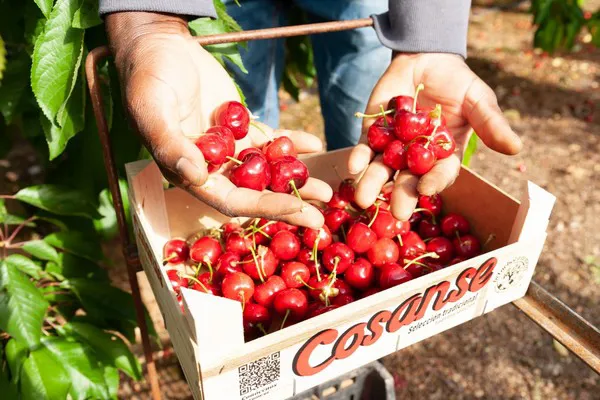The cherry supply has been low so far in many producing areas in Spain and other European countries due to the impact of rain and mild temperatures, which have taken a toll on the harvest of some early varieties and slowed down the production.
"So far, we have experienced strong demand and high prices, both in the domestic market and for exports, with good fruit quality, except for some varieties affected by the rains," says Sergio Alonso, CFO of the Zaragoza-based cooperative Cosanse.

"If the weather allows it, we should have a normal harvest in terms of volume from now on, and we hope it will be so, because our partners' cherry production is uninsured this year due to the tightening of Agroseguro's conditions because of the many claims in recent years. The result of any unforeseen weather events, like a hail storm, could be dramatic," warns Sergio Alonso.
Regarding the stone fruit campaign, which will start at the end of June, a slightly lower production is expected in Aragon compared to 2023, which was an exceptional year in terms of volume. "There will be a slightly smaller harvest, but larger sizes and better overall quality," says the CFO of this cooperative, which annually produces around 20 million kilos of fruit, with between 12 and 14 million kilos of those being stone fruits.
"There will be a significant drop in the plum harvest, of between 30 and 40%. Also, the largest producing area in Spain, which is Extremadura, expects a drop of more than 30% in the volume due to alternate bearing, so prices could be interesting this year," says Sergio Alonso.
"Although we initially expected an early start to the harvest, the cool weather and many consecutive cloudy days will eventually lead to us to start around the usual dates. And considering that Murcia is ahead and that other producing areas are more or less on schedule, there should be no overlap. Moreover, if it's hot, there will be good consumption and, ultimately, a campaign without complications," says Sergio Alonso.
High production costs, increasingly limited access to water due to ongoing drought, restrictions on the use of active substances by the EU, the low availability of labor and the lack of generational turnover are the biggest threats, according to this Zaragoza cooperative. For more information:
For more information:
Sergio Alonso Zaragoza
Sociedad Cooperativa Agraria San Sebastián (COSANSE)
T: +34 976600050
[email protected]
www.cosanse.com
